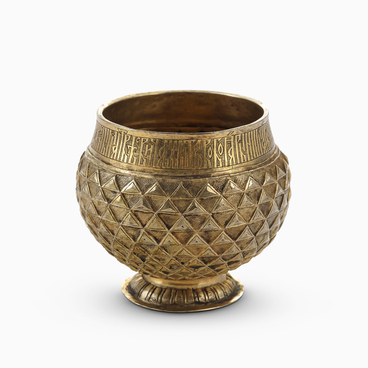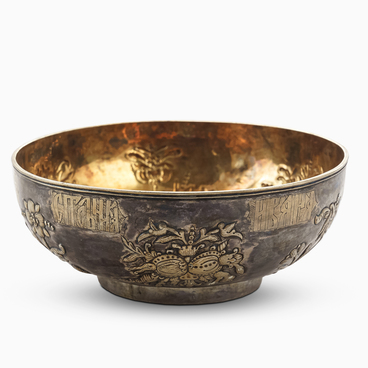Maria Klavdievna Tenisheva often acquired artifacts that were connected with prominent Russian people. The exhibition of the Museum of Russian Heritage presents the bratina of Bogdan Matveyevich Khitrovo.
Since ancient times in Russia, there has been a custom of proclaiming a “health toast” at the table during celebrations. Back then, people used elegant spherical vessels that looked like bowls on a small stand. Sometimes they had a lid. During the feast, such cup was passed from one person to another, helping people to bond. Hence, such bowls were called bratinas — derived from the Russian “brat”, meaning “brother”.
Bogdan Matveyevich Khitrovo was the son of the nobleman Matvey Yelizarovich Khitrovo and Pelageya Alekseyevna Rtishcheva. Furthermore, his uncle was the chamberlain (managed the household of the monarch) and okolnichy (an old Russian court official position) Mikhail Rtishchev and his cousin was Feodor Mikhailovich Rtishchev, one of the closest advisors to Tsar Alexis I of Russia.
Bogdan Khitrovo’s career began in 1633, when he was appointed a stryapchy in the palace of Tsar Michael I of Russia, and in 1636 he became a pantler (stolnik).
In 1647, Bogdan Khitrovo was granted the status of okolnichy for the construction of a chain of fortified lines on the borderlines of the Russian state. From 1648, he supervised the construction of the fortress city of Sinbirsk (today Ulyanovsk), and also participated in the construction and strengthening of other fortresses. In 1649–1650, Bogdan Khitrovo was in charge of the Office of Petitions (Chelobitny Prikaz), and from July 1651 to December 1655 — the Zemstvo Prikaz.
Khitrovo distinguished himself during the Russo-Polish War of 1654–1667. In the summer of 1654, he took part in the liberation of Smolensk.
After the siege of Riga, wounded in battle, he returned to Moscow and became a powerful okolnichy and Master of Arms: his duties included overseeing the royal armament.
From 1656, Bogdan Khitrovo became the head of the Armament Prikaz and was responsible for arming the entire Russian army (except the artillery). In particular, he was in charge of goldsmithing and silversmithing workshops. Under Bogdan Matveyevich Khitrovo, the Armament Prikaz began to be called the Armory, which he led until the end of his life.
Before his death, boyar Bogdan Khitrovo ordered to set free all bondagers and captives who lived on his lands.
Bogdan Khitrovo was buried in the Smolensk Cathedral of the Novodevichy Monastery.
In 2008, in the city of Ulyanovsk (formerly
Simbirsk) a monument of Bogdan Khitrovo was erected, celebrating him as the
founder of this city.




